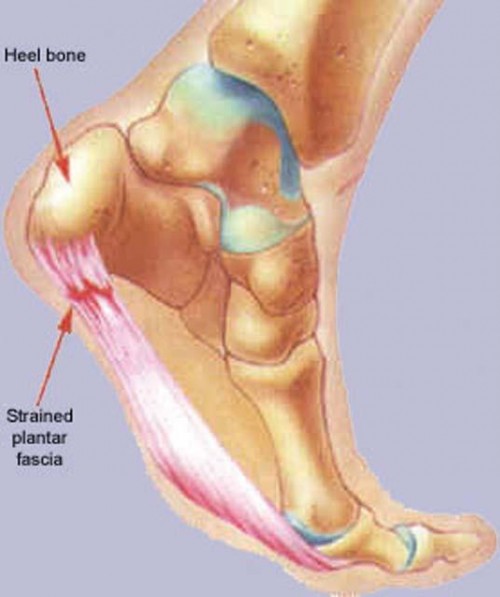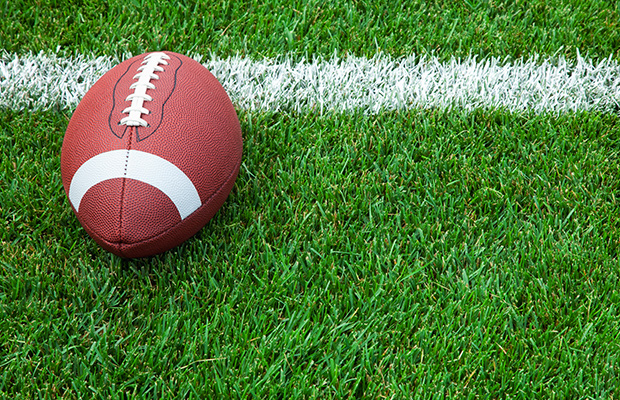Tuesday, July 20
July 20, 2010Thursday, July 22
July 22, 2010San Antonio Spurs guard Tony Parker caught the basketball at the top of the key and began to sprint toward the basket.
What comes next for the All-Star is usually like clockwork – a sharp crossover dribble, then a teardrop floater for a quick two points.
But during this past season, things didn’t always end that way for Parker, because he suffered from plantar fasciitis, an injury that limited his jumping and running ability and sent him to his worst season in five years.
“I’m a little bit slower, that’s why,” Parker told San Antonio reporters when asked about his drop in output. “I don’t think it’s much different. It’s just my plantar fasciitis is killing me.”
But what exactly is this injury, and why does it take so long to heal?
In this version of our injury series, SportsNet hopes to answer all of those questions, plus many more about the painful foot injury that plagues thousands of athletes each year.
In future weeks, we will detail other injuries that nag athletes in the Tri-parish area and worldwide.
Overview:
PF occurs when the plantar fascia in a person’s foot becomes inflamed. Plantar fascia is the thick, connective tissues of the foot that support our arches.
“It’s not our sole provider of support, but it basically helps provide support to the muscles of the foot and their attachments,” said LSU senior associate athletic trainer Shawn Eddy.
Most of the people who report the injury say it occurs after strenuous athletic periods of activity like running and jumping, which puts a strain on our feet and sometimes causes the tissue to become inflamed.
Individuals who are overweight may also experience discomfort, because the more weight pounding the feet while walking, the more likely a person is to experience inflammation.
“The tissue is simply overused in runners and whatnot,” Eddy said. “When a person gets that inflammation, they’ll experience pretty severe pain just simply from walking.”
While the tissue extends all the way from a person’s heel to the base of the toes, Eddy said there is a pinpoint area of the foot that usually hurts more than others when a person suffers from PF.
“It’s more from the mid foot toward the heel that they will typically see more people having that discomfort,” Eddy said.
And just like one might imagine, sports that involve the most running and jumping are the sports where a person is most likely to suffer from PF.
“Obviously in your sports that put more of an emphasis on those things like your basketballs or your volleyballs, those are where we see the most cases,” Eddy said. “But they can happen in any sport with any athlete, as well.
Treatment and Recovery:
Unlike other injuries, a player can play with PF if he or she chooses to do so.
“Everything depends on a person’s pain tolerance,” Eddy said. “But most of the time, they are able to play through it if they choose to do so.”
Eddy said the risk of experiencing a more severe injury after PF is slim to none if an athlete chooses to continue playing through the pain.
But just playing is one thing. Playing well is another issue entirely. Being a half-step slower and being able to jump a few inches fewer usually catches up to those with the injury, and it’s usually a killer on the stat sheet. When Parker’s teammate with the Spurs, Tim Duncan, suffered the injury in 2005, he had his worst statistical season of his career, having career low output in both points and rebounds per game, as well as field goal percentage.
“The athletes say it’s a painful, painful thing,” Eddy said.
The way the injury is treated is simple, but it has several steps.
When playing with the injury, athletes usually apply layers of tape to their heels to provide support to their arches.
Eddy also said after a diagnosis is made, athletes can do various exercises to work on their flexibility and strength of their feet.
But even with all the self-care in the world, Eddy said other means are usually pursued if an athlete looks to chase away the pain.
“But even after all of this, anti-inflammatories are probably going to be recommended to help reduce that inflammation,” Eddy said. “Any time there’s inflammation, whether it’s plantar fasciitis or somewhere else in the body, there’s overuse going on, but there’s also trauma there. So we need to get that trauma to go away. So until it fully heals, you’re not going to get that complete resolve.”
Getting to 100 percent is not as easy as it might be in other areas of the body, though; as PF is usually one of the most difficult injuries to fully recover from.
Eddy said doctors are not fully sure why the injury takes so long to heal, but he speculates it is because of two factors: athletes choosing to play with the injury and the tissues’ location in the foot.
“This is a thick, fibrous tissue, which means it probably means it doesn’t have a great blood supply flowing to it, which doesn’t enable it to heal quickly when there’s trauma there,” Eddy said. “This is difficult than a muscle; it’s more like a tendon injury in that that tissue is not getting as much healing help from the blood as other parts of the body.”
But Eddy said help may soon be on the way in the form of platelet-rich plasma infusions (PRP). That process, the trainer said, would allow doctors to draw blood from an athlete, then reinject the healing portions of blood back into the injured area, which would help speed the healing process.
This technology has been used in other injuries in the past with measured success.
“I suspect that in time, this type of injury would be one that you’d be able to see the PRP technology used,” Eddy said.
Random Facts:
According to a report, 2 million Americans experience PF each year.
The report states that most of those 2 million cases go unreported because the injury doesn’t provide people with severe enough pain to visit a doctor. In total, approximately 10 percent of people experience PF in their lifetimes.
Eddy said PF is more easily treated if a person reports it when they first experience the pain.
He said there is no way to prevent the condition, but there are ways to lessen your chances of getting the inflammation.
“We always tell our players to warm-up properly,” Eddy said. “Getting the right amount of exercising and stretching before an athletic activity goes a long way in terms of prevention.”
Listed below are famous athletes to suffer the injury in their careers.
• Jeremy Shockey
• Tim Duncan
• Tony Parker
• Taj Gibson
• Ron Artest
• Joakim Noah














